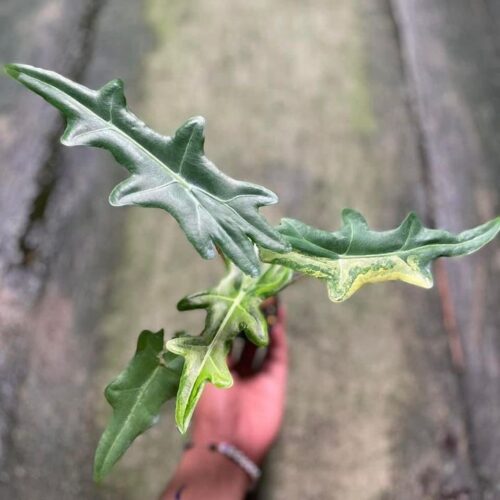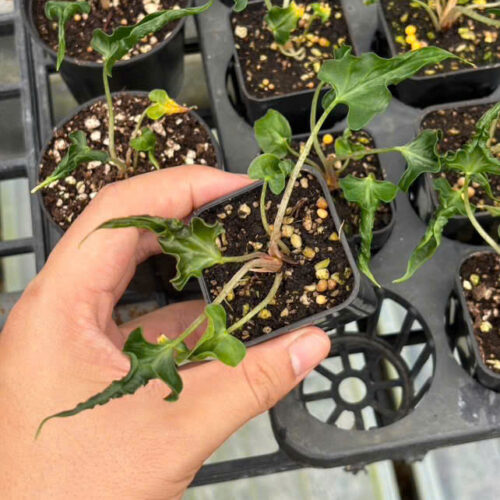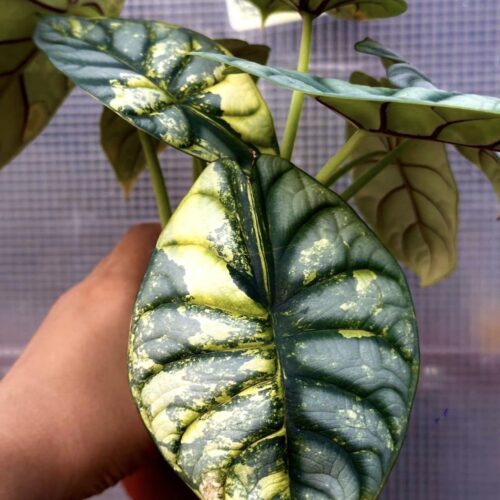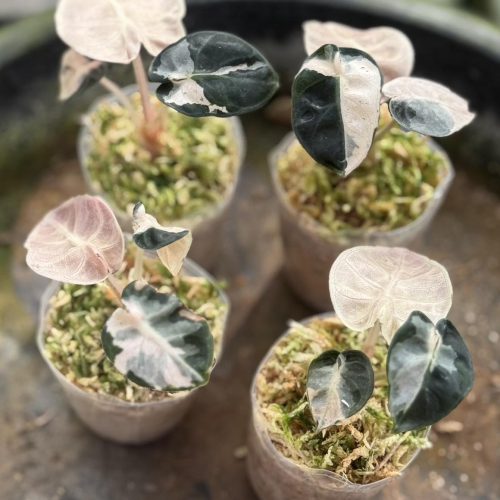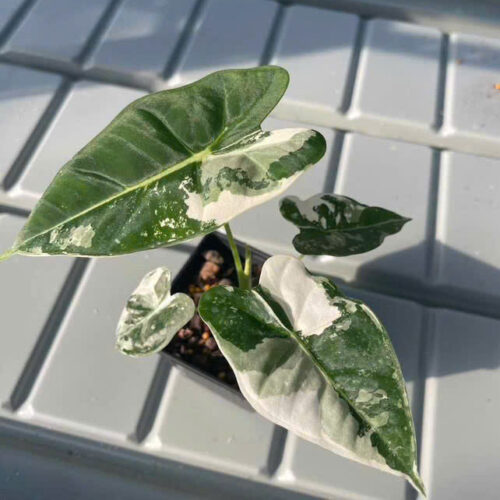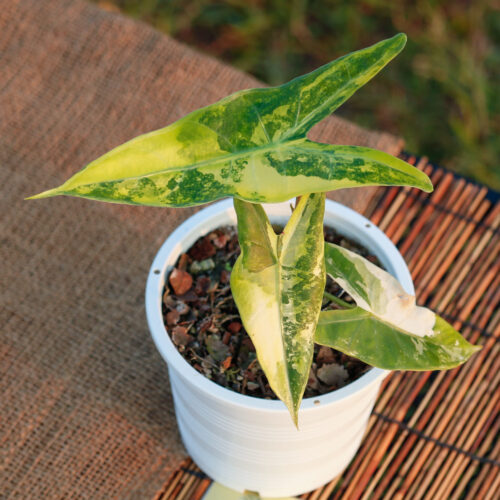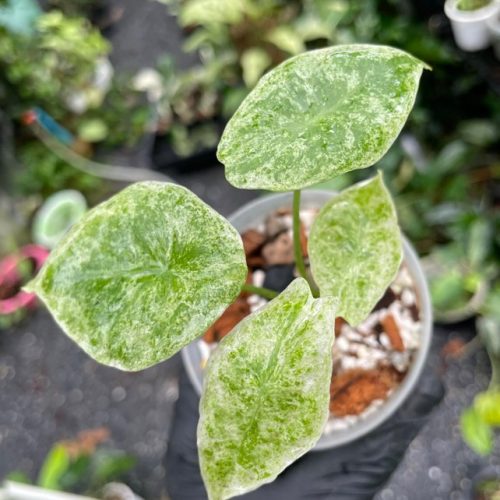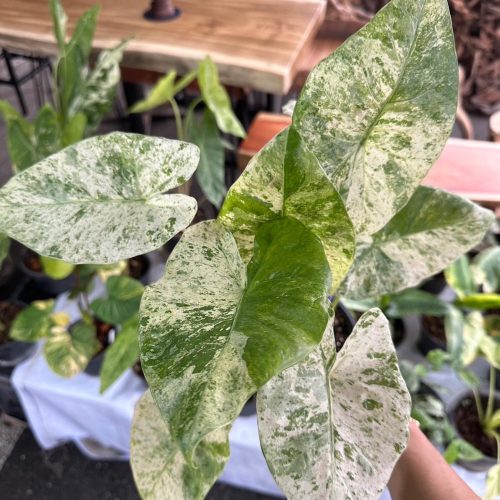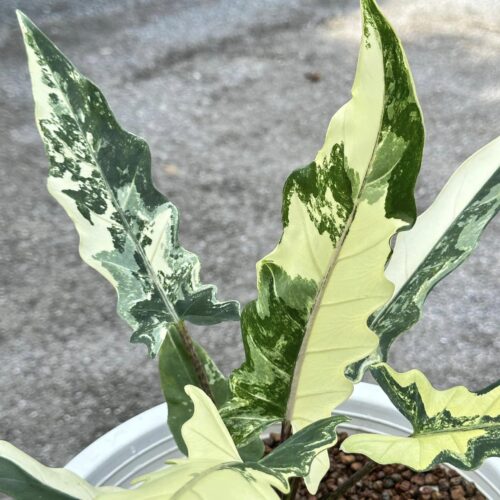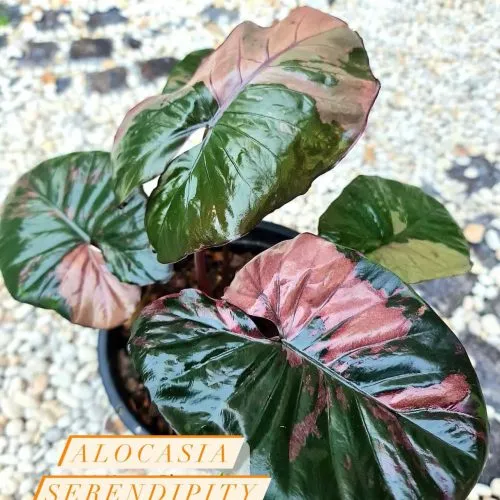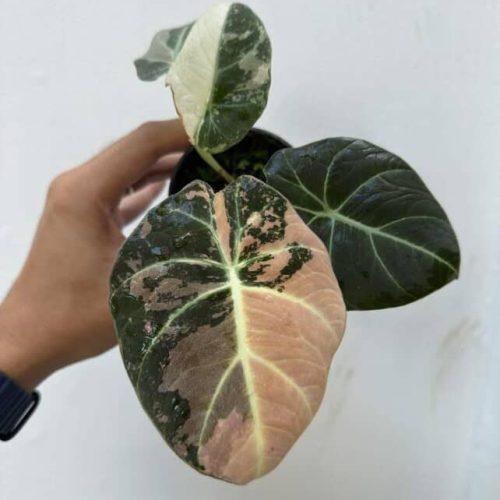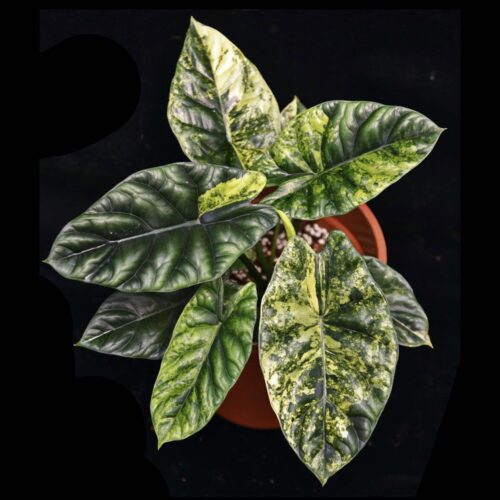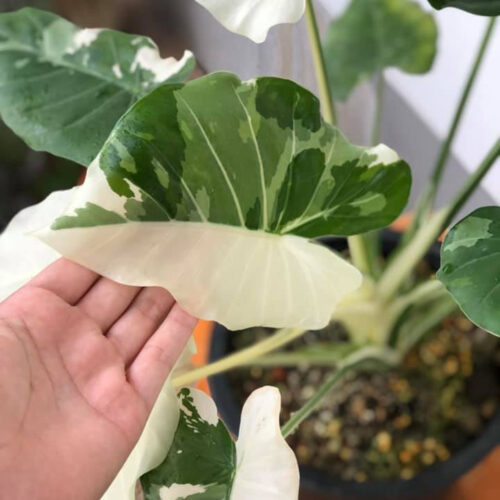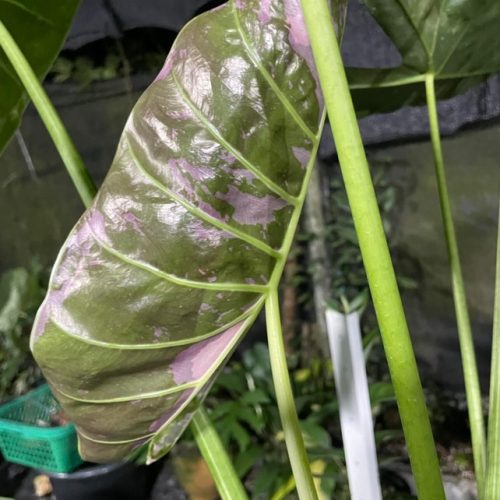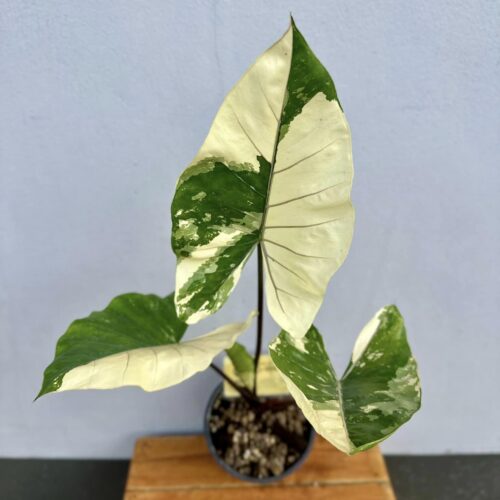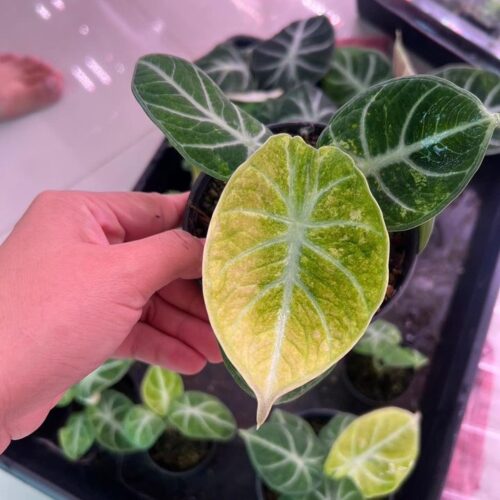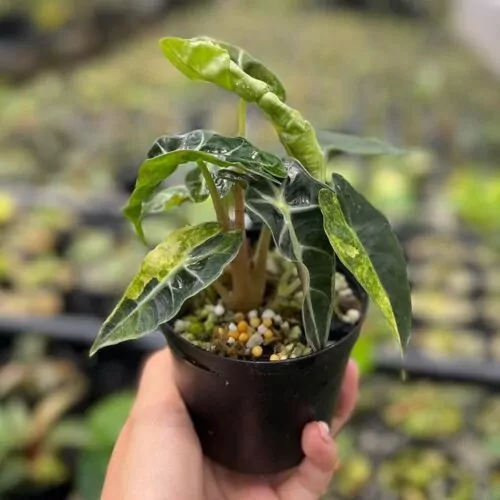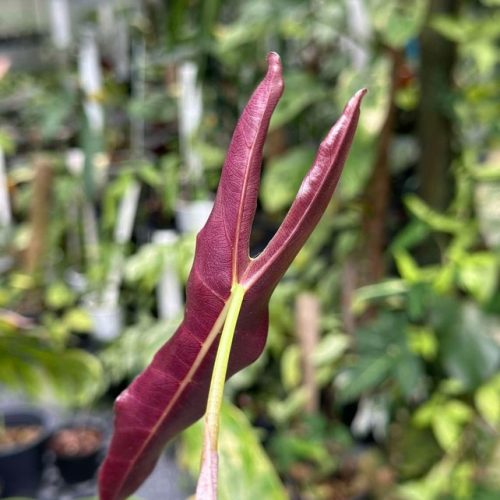The Alocasia Melo, also known as the Rugged Elephant Ear, is a striking plant known for its thick, textured leaves and unique appearance. This comprehensive guide will provide you with all the information you need to grow and care for the Alocasia Melo successfully.
Introduction
The Alocasia Melo is a member of the aroid plant family, which includes popular varieties like Philodendron, Monstera, and Anthurium. Native to the tropical rainforests of Southeast Asia, this plant is prized for its thick, green leaves with a unique, rugged texture. Similar to Aglaonema and Epipremnum, the Alocasia Melo is not only beautiful but also relatively easy to care for.
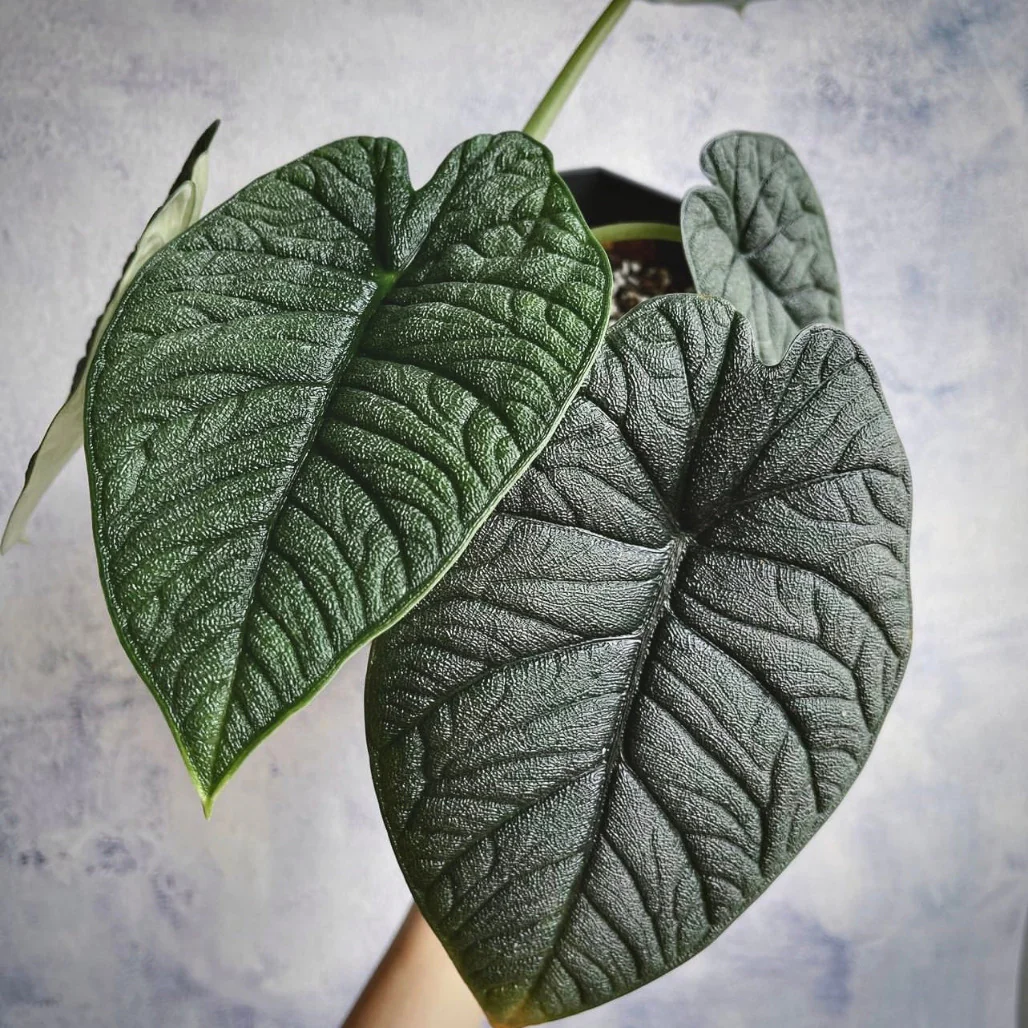
Origins and Physical Attributes
Native to the tropical forests of Southeast Asia, Alocasia melo thrives in hot, humid environments with filtered sunlight. Some of its most notable features include:
Large, Dramatic Foliage
The leaves of A. melo can grow over 3 feet long. Their distinct shape, featuring prominent veins and arrow-like points, make them real standouts. The leaves emerge with a stunning red hue before darkening to green.
For more information on the diverse leaf shapes and sizes in the Alocasia family, see “5 Stunning Alocasia Varieties.”
Unique Flower Structure
Though not always abundant, A. melo flowers have an intriguing shape. The hood-like spathe wraps around the finger-like spadix containing small flowers. These structures can range from green to dark red or purple.
Impressive Scale
Given the right conditions, Alocasia melo can become quite large, reaching heights and widths of 6 feet or more. Their substantial size makes them ideal statement plants.
Caring for Alocasia Melo Plants
Caring for these tropical beauties requires paying close attention to their preferences. With the right care, you’ll be rewarded with vigorous growth and eye-catching style.
Ideal Growing Conditions
A. melo does best in Zone 10 or 11. Indoors, maintain temperatures around 70-80°F. Provide very high humidity. Site near a humidifier or mist regularly. Offer bright, indirect light or several hours of direct morning sun.
Soil Needs
Use a rich, well-draining potting mix. Incorporate peat moss or compost to retain moisture. Adding perlite improves drainage to prevent root rot. Re-pot every 2 years in the spring as needed.
Watering and Feeding
Allow the top inch of soil to dry between waterings. Water thoroughly until it drains from holes at the base. Feed a balanced liquid fertilizer diluted to half strength every 2 weeks during growth periods. Reduce feeding in winter.
Addressing Common Issues
Leaf spot diseases can occur if leaves remain wet. Allow leaves to fully dry out between waterings. Maintain warm temperatures and sufficient air circulation. Keep a consistent watering pattern to prevent issues. Rotate plants periodically.
To delve deeper into the specific care requirements for Alocasias, refer to “5 Tips to Grow Alocasia Indoors.”
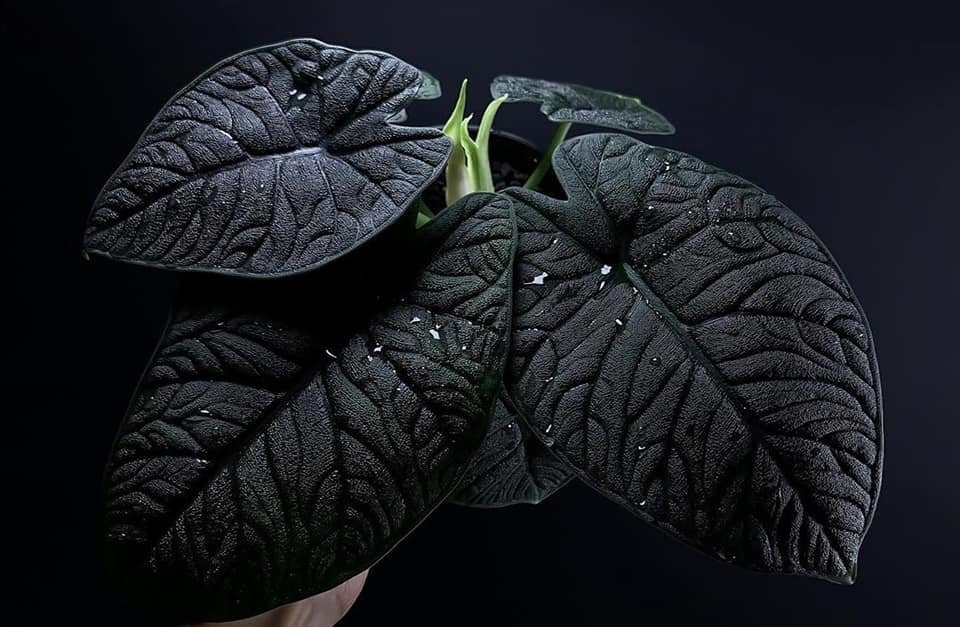
“Discover the lush beauty of Alocasia melo – Click here to bring this exotic gem into your home today!”
Alocasia species are the most sought after by aroid plant lovers
Displaying Alocasia Melo Plants
Thanks to their commanding presence, Alocasia melo makes a stellar accent plant for filling large spaces. Consider displaying them in the following areas:
Creating a Jungle Vignette
Group a few Alocasia varieties together near other tropicals like Monstera and Philodendron. Add moss poles for the vines to climb and scatter large leaves across the floor for an indoor jungle effect.
Highlighting as a Focal Point
Place a large A. melo specimen in a heavy container within view. Let its huge leaves be the star of your sunroom or screened patio. Surround with smaller accent plants and hardscaping.
Lining an Entryway
Flank an entrance with Alocasia melo plants. Their vertical nature draws the eye up and makes a statement as visitors arrive. For added drama, choose plants with contrasting leaf shapes and colors.
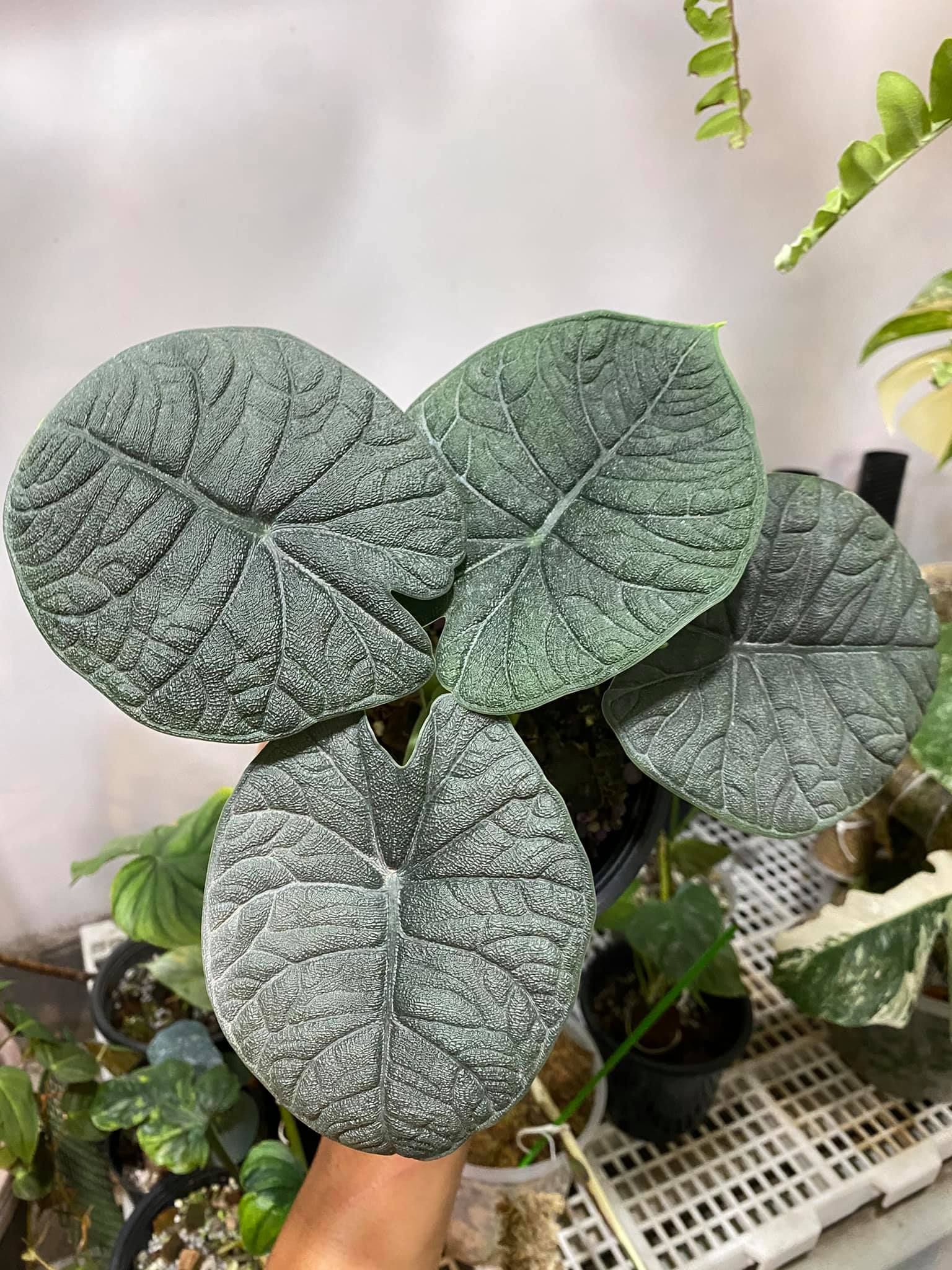
Conclusion
With its oversized, uniquely shaped leaves and tropical origins, Alocasia melo brings drama wherever it grows. Caring for these statement plants takes some effort but is very worthwhile. Their lush foliage and stunning flowers will elevate both indoor and outdoor spaces. Just be sure to provide the right growing conditions to keep them healthy and happy. With the proper care, Alocasia melo will thrive and showcase its one-of-a-kind beauty.
FAQs
1. Is Alocasia Melo a good indoor plant?
Absolutely! Its compact size and stunning foliage make it a great choice for indoor settings. Explore additional indoor cultivation tips and tricks for Alocasias in “5 Key Steps to Supercharge Your Alocasia Growth in Weeks!.”
2. How often should I water my Alocasia Melo?
Typically, watering once a week is enough. But always check the soil’s moisture level before watering.
3. Does Alocasia Melo need a lot of light?
Yes, it thrives in bright, indirect light. A north or east-facing window would be ideal.
4. How do I propagate Alocasia Melo?
You can propagate it by division or through seeds. Remember, both methods require patience and care.
5. What should I do if my Alocasia Melo has yellow leaves?
Yellow leaves often indicate overwatering. Check your watering habits and ensure the plant has proper drainage.





















